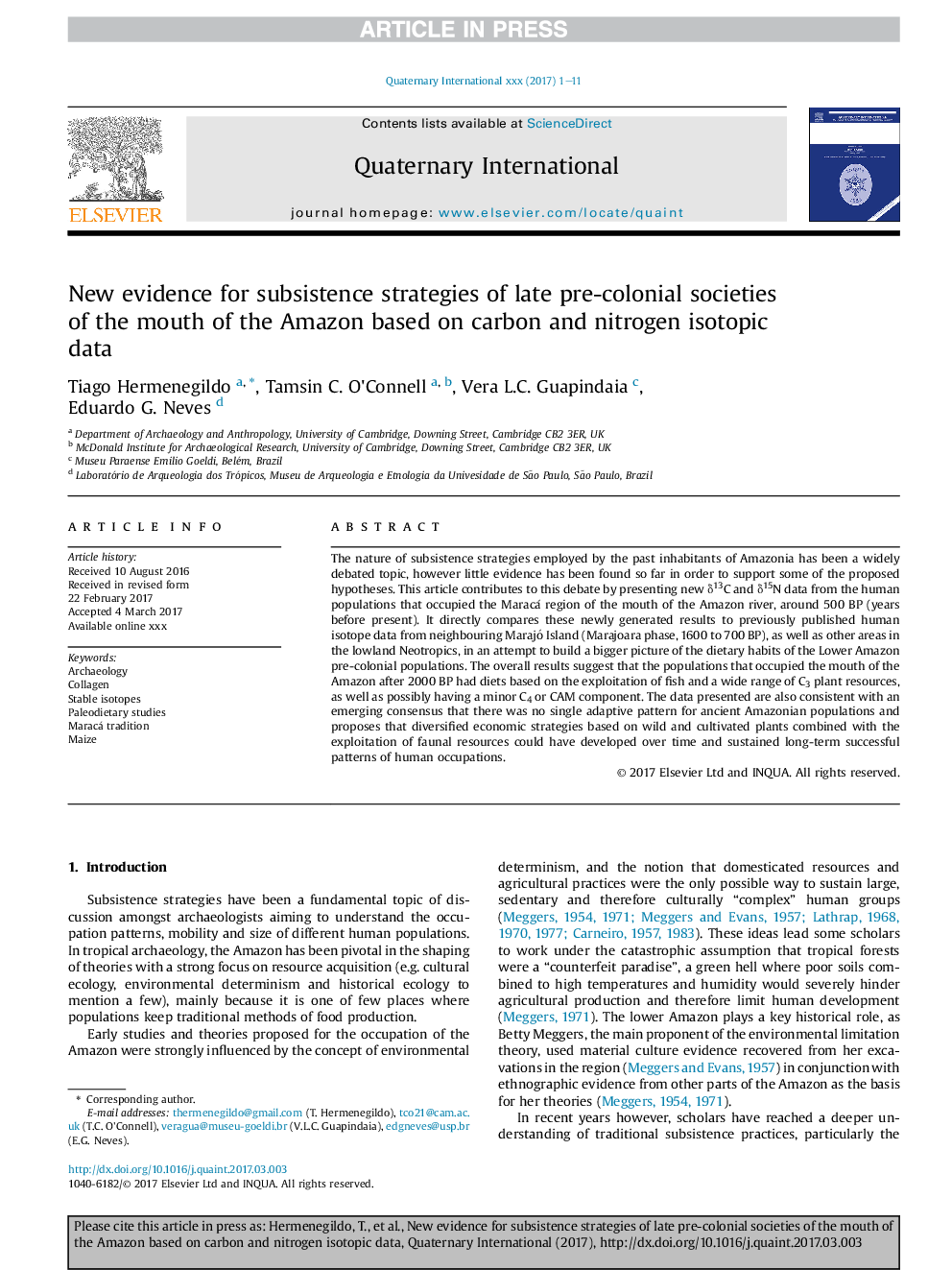| Article ID | Journal | Published Year | Pages | File Type |
|---|---|---|---|---|
| 5113038 | Quaternary International | 2017 | 11 Pages |
Abstract
The nature of subsistence strategies employed by the past inhabitants of Amazonia has been a widely debated topic, however little evidence has been found so far in order to support some of the proposed hypotheses. This article contributes to this debate by presenting new δ13C and δ15N data from the human populations that occupied the Maracá region of the mouth of the Amazon river, around 500 BP (years before present). It directly compares these newly generated results to previously published human isotope data from neighbouring Marajó Island (Marajoara phase, 1600 to 700 BP), as well as other areas in the lowland Neotropics, in an attempt to build a bigger picture of the dietary habits of the Lower Amazon pre-colonial populations. The overall results suggest that the populations that occupied the mouth of the Amazon after 2000 BP had diets based on the exploitation of fish and a wide range of C3 plant resources, as well as possibly having a minor C4 or CAM component. The data presented are also consistent with an emerging consensus that there was no single adaptive pattern for ancient Amazonian populations and proposes that diversified economic strategies based on wild and cultivated plants combined with the exploitation of faunal resources could have developed over time and sustained long-term successful patterns of human occupations.
Related Topics
Physical Sciences and Engineering
Earth and Planetary Sciences
Geology
Authors
Tiago Hermenegildo, Tamsin C. O'Connell, Vera L.C. Guapindaia, Eduardo G. Neves,
